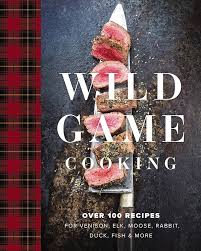Exploring the Trend of Wild Game in Modern Cuisine

Introduction
Wild game has been a staple in various cultures around the world, and its significance has grown in recent years as more people seek sustainable and ethical dietary choices. The increasing interest in locally sourced food, alongside a desire to explore new flavours, has made wild game a focal point for many chefs and home cooks alike. Understanding this trend provides insight into a broader shift towards healthy eating, sustainability, and culinary exploration.
The Rise of Wild Game
According to recent reports from the Food and Agriculture Organisation, there has been a notable increase in the demand for wild game across the United Kingdom. Popular options include venison, rabbit, and game birds like pheasant and partridge. Many restaurants are now featuring wild game on their menus, catering to adventurous diners eager to try something new. For instance, the recent campaign by the British Game Alliance, entitled “Game On,” promotes wild game as a healthy, high-protein food source, further influencing its popularity.
Sustainability and Health Benefits
Wild game animals are often raised in their natural habitats, resulting in leaner meat that is lower in fat content compared to domesticated animals. This aligns with current dietary trends encouraging the consumption of lean proteins for better health. Furthermore, wild game is often perceived as more sustainable, as hunting regulations ensure that populations are carefully managed, preserving ecosystems while providing a resource for food.
Accessibility and Preparation
Despite its growing popularity, many consumers remain uncertain about how to prepare wild game effectively. However, local butchers and online suppliers now offer pre-prepared cuts, making it more accessible to the average cook. Additionally, resources such as cookbooks focused on wild game recipes and online tutorials are becoming widely available, helping to demystify this ingredient for home cooks.
Conclusion
The increasing interest in wild game reflects broader societal trends toward sustainability and health-focused eating. With its rich flavours and nutritional benefits, wild game is poised to become a mainstay in contemporary cuisine. As more individuals are encouraged to explore these options, it opens the door for restaurateurs and chefs to innovate with new dishes, potentially transforming the culinary landscape in the years to come. For readers, embracing wild game can be an exciting journey into the world of natural flavours, while also supporting sustainable food practices.









